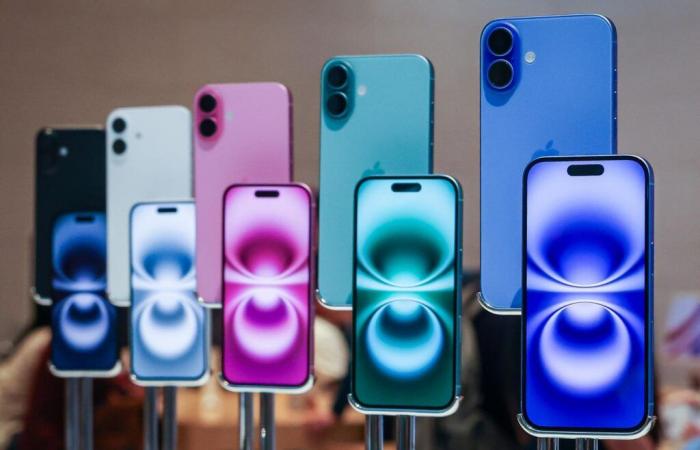Updated November 3 with report of new design change to own-brand chip for iPhone 17 series.
The iPhone 17 series will be released next fall, but a new report suggests that it may see something fans have been requesting for years: ProMotion 120Hz displays on the entry-level iPhone. Here’s what the report says. What’s more, there is also a report of a new design coming to a component inside the iPhone: the chip that handles wi-fi and Bluetooth.
Apple iPhone 16: will the next update see ProMotion for the first time?
Getty Images
It looks like Apple is about to switch the chip from one made by Broadcom to its own in-house model, according to a new report on X from analyst Ming-Chi Kuo of TFI Securities.
ForbesiOS 18.2: Release Date For Major iPhone AI Update Revealed In New ReportBy David Phelan
Kuo says, “With new products in 2H25 (e.g., iPhone 17), Apple plans to use its own Wi-Fi chips, which will be made by TSMC’s N7 process and support the latest Wi-Fi 7 spec. Apple expects to move nearly all products to in-house Wi-Fi chips within about three years.”
In a clarification, the analyst went onto say that Apple’s own 5G chip will also be in the iPhone 17 and the upcoming iPhone SE 4, but the wi-fi and Bluetooth chip will only arrive for the iPhone 17. The iPhone SE 4, in other words, will still have a Broadcom chip on board.
The benefit of this move is greater control for Apple and it will reduce costs and, Kuo says, “enhance Apple’s ecosystem integration advantages.”
Back to the report on the display upgrade for iPhone 17. When Apple released the latest iPhone series in Sept. 2024, responses to the iPhone 16 and iPhone 16 Plus were positive in almost every way. Critics, myself included, felt that the new iPhone 16 and 16 Plus came closer to the Pro models than ever.
But there was one way that the swathe of upgrades had left the non-Pro iPhones before: the display. The iPhone 16 and iPhone 16 Plus both have a screen with a 60Hz refresh rate, an attribute remains where Apple has stubbornly held it.
Many pointed out that you can buy an Android phone for much less money than the iPhone 16 which has a faster refresh-rate display.
The next iPhone may change all this as the same Low-Temperature Polycrystalline Oxide panel technology will be applied to all models of the iPhone 17 series, according to a new report from the South Korean website ET News.
That’s the same tech that Apple currently uses in the iPhone 16 Pro and iPhone 16 Pro Max. The regular iPhones use LTPS which uses more power and isn’t as expensive to produce.
A move to LTPO would be seen as meaning that “Apple has chosen to fully apply LTPO to enhance the performance of the general model,” according to ET News, which calls the non-Pro iPhones the general models.
Hold on, you say, there’s no mention of 120Hz here.
Correct, but it’s hard to escape the idea that it will come too, as LTPO allows for variable refresh rates with less power consumption, meaning that Apple could introduce ProMotion without harming battery life.
And there’s another reason to think ProMotion will come: next spring, Apple is expected to launch its fourth-generation iPhone SE. It’s thought it will introduce many of the features of the flagship series iPhones, such as an all-screen design with Face ID, a step up to OLED and a 48-megapixel camera.
Apple needs to differentiate between the SE and the iPhone 17 to prevent people upgrading to the more affordable SE. Pitching ProMotion arriving on the general model for the first time could be a key iPhone 17 design upgrade bonus to set the new phone apart.
ForbesApple iPhone 16 And iPhone 16 Plus Review: Who Needs Pro?By






